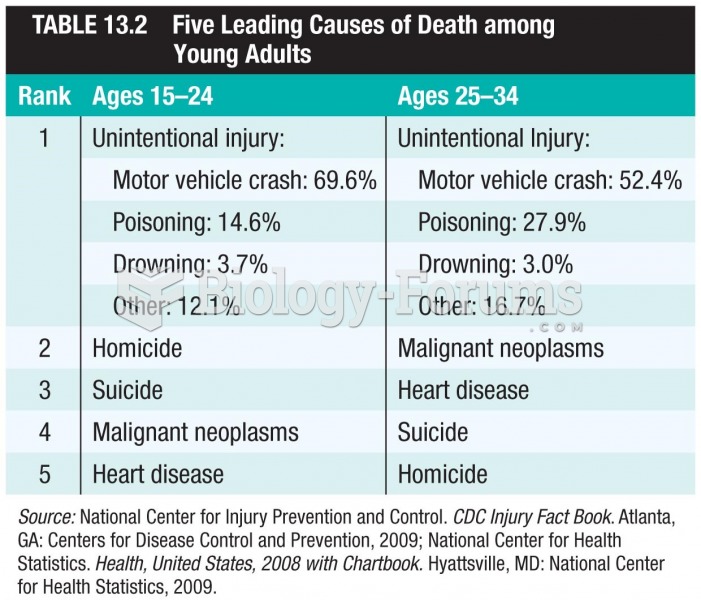|
|
|
Bacteria have been found alive in a lake buried one half mile under ice in Antarctica.
Aspirin is the most widely used drug in the world. It has even been recognized as such by the Guinness Book of World Records.
Nitroglycerin is used to alleviate various heart-related conditions, and it is also the chief component of dynamite (but mixed in a solid clay base to stabilize it).
To maintain good kidney function, you should drink at least 3 quarts of water daily. Water dilutes urine and helps prevent concentrations of salts and minerals that can lead to kidney stone formation. Chronic dehydration is a major contributor to the development of kidney stones.
People about to have surgery must tell their health care providers about all supplements they take.







